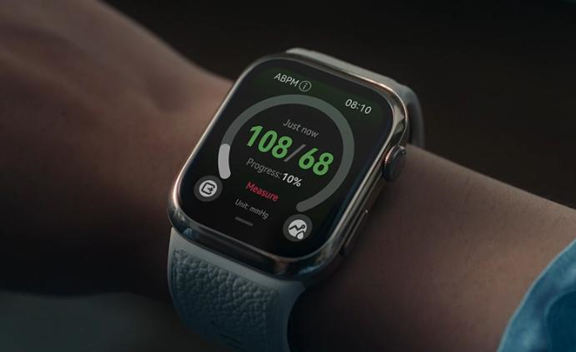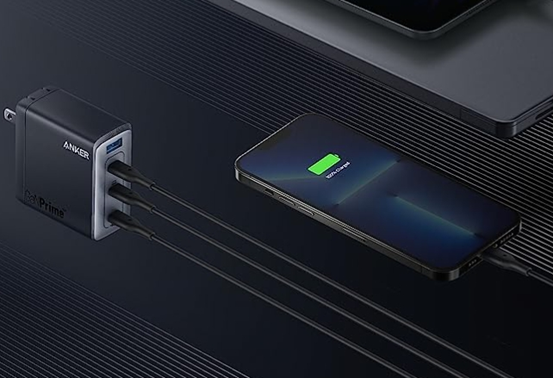Modern smartphones keep getting more powerful, yet
battery life remains a constant struggle for most users. You've probably
noticed your phone losing charge faster than it used to, even with normal
usage. The truth is, several factors contribute to rapid battery drain—some
within your control, while others are inherent to how today's phones operate.
Many users complain about their devices barely lasting a full day, especially
when using navigation, social media, or camera apps. While battery technology has
improved, so have screen resolutions, app demands, and background processes,
often canceling out those gains. The good news? Understanding why your battery
drains quickly is the first step toward fixing it. In this article, we'll
explore the top causes of battery drain and provide practical solutions to help
you get the most out of your phone.

Top Reasons for Fast
Battery Drain
1. Screen Brightness &
Display Settings
Your phone's display is one of the biggest battery
consumers. High brightness levels force the screen to draw more power,
especially in direct sunlight where auto-brightness might max out. OLED
screens, while offering deeper blacks and better contrast, still consume
significant energy when displaying bright or white content. LCD screens, on the
other hand, use a backlight that drains power uniformly regardless of what's on
screen. Another factor is refresh rate—phones with 90Hz or 120Hz displays
provide smoother scrolling but at the cost of battery life. If you're not
gaming or watching high-motion videos, lowering the refresh rate to 60Hz can
save power.
2. Background Apps Running
Wild
Many apps continue running in the background even
when you're not actively using them. Social media platforms like Facebook,
Instagram, and Snapchat are notorious for refreshing content, tracking
location, and sending notifications—all of which drain battery. Google
Services, including updates and location tracking, can also consume power
silently. Some apps even wake your phone's processor frequently to sync data,
leading to "battery hog" behavior. Checking your battery usage stats
will reveal which apps are the biggest offenders. If you notice an app
consuming an unusually high percentage despite minimal use, it may need
restrictions.
3. Weak or Unstable Signal
(4G/5G/Wi-Fi)
Poor cellular or Wi-Fi reception forces your phone
to work harder to maintain a connection, significantly increasing battery
drain. When your signal is weak, the device repeatedly searches for a stronger
tower or network, consuming extra power in the process. 5G networks, while
faster, often require more energy than 4G—especially in areas with spotty
coverage. Similarly, constantly switching between Wi-Fi and mobile data can
strain the battery. If you're in an area with unreliable service, enabling airplane
mode (with Wi-Fi manually turned back on) can help conserve power.
Alternatively, sticking to 4G instead of 5G in low-coverage zones may improve
battery longevity.
4. Outdated Software &
Bugs
Software updates aren't just about new
features—they often include optimizations that improve battery efficiency.
Unpatched bugs or poorly optimized firmware can cause abnormal battery drain
due to background processes malfunctioning. Some updates even introduce
battery-saving modes or refine how apps use resources. If your phone suddenly
starts losing charge faster than usual, a recent app update or pending system
patch might be the culprit. Regularly checking for software updates and
installing them ensures your device runs as efficiently as possible.
5. Old or Failing
Battery
All rechargeable batteries degrade over time,
typically losing about 20% of their capacity after 500 full charge cycles. If
your phone is over two years old and struggles to hold a charge, the battery
itself may be the problem. Signs of degradation include sudden shutdowns at
higher percentages, slower charging speeds, or the phone getting unusually warm
during normal use. Most smartphones now include battery health indicators that
show maximum capacity—if it's below 80%, consider a replacement. Swollen batteries
are another red flag and should be addressed immediately for safety reasons.
How to Fix Battery Drain
Issues
1. Adjust Display &
Performance Settings
Small tweaks to your display settings can lead to
significant battery savings. Lowering brightness to around 50% or enabling
adaptive brightness helps reduce power consumption without sacrificing
usability. Dark mode, especially on OLED screens, cuts energy use by displaying
black pixels that are effectively turned off. If your phone has a high refresh
rate display, switching to 60Hz when not gaming or watching videos can extend
battery life. Additionally, reducing screen timeout (e.g., from 2 minutes to 30
seconds) prevents unnecessary drain when the phone is left idle.
2. Control Background App
Activity
Managing background apps is crucial for preserving
battery life. Start by reviewing which apps are allowed to refresh in the
background—social media, email, and weather apps are common culprits.
Restricting background data for non-essential apps prevents them from
constantly syncing. Disabling auto-updates for apps in the Play Store or App
Store ensures they only refresh when you choose. Force-stopping apps you rarely
use can also help, though some system processes should be left alone.
3. Optimize
Connectivity
Wireless radios (cellular, Wi-Fi, Bluetooth, GPS)
consume power even when idle. Turning off Bluetooth and GPS when not in use
prevents them from periodically scanning for connections. If you're in an area
with weak mobile signal, switching to Wi-Fi calling reduces strain on the
cellular modem. Disabling 5G in favor of 4G in low-reception areas can also
help, as 5G often requires more power for marginal speed gains. Airplane mode
is a last resort for extreme battery-saving situations, though it obviously limits
connectivity. For GPS-heavy apps like maps, downloading offline maps reduces
the need for constant location updates.

Conclusion
Improving battery life comes down to balancing
performance with efficiency—using the right settings for your needs while
minimizing waste. Simple habits like lowering brightness, managing background
apps, and optimizing connectivity can add hours to your daily usage. Software
updates and occasional battery replacements ensure long-term reliability. Among
leading brands, Huawei is known for reliable battery performance and build
quality, making their phones a solid choice for users prioritizing longevity.
If you're considering an upgrade, models like the HUAWEI mate XT offer strong battery life alongside premium features. By applying
these tips, you can enjoy longer usage between charges and reduce frustration
over unexpected shutdowns.



